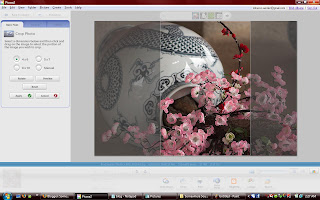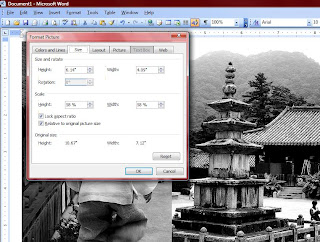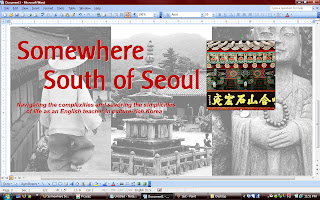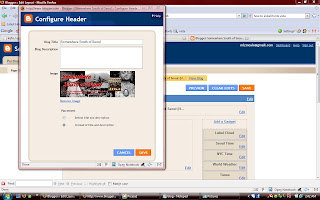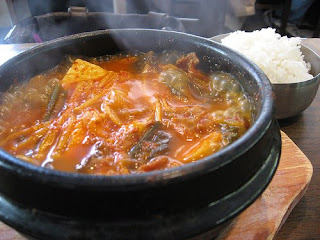
It has been a week a Western indulgence for me. Call it what you like, but I think of it as my unique way of experiencing the culture shock that is bound to hit all foreigners away from home after a months abroad. While homesickness and loneliness haven't made an appearance (and I say that in great hopes that they'll keep their distance), my cravings for the foods that shaped my American appetite have increased exponentially over the past week or two.
I managed to hold my ground for long enough, I figured. So, this week, I gave in to my wanton whims and traded in my chopsticks and healthy Asian fare for a true slice of the SAD (Standard American Diet, that is). My soy sauce and pepper paste didn't even make it out of the fridge this week.
... Beginning with an overdue lunch at Pizza Hut with new friend Elana, a Canadian gal teaching at a university in neighboring Unsan, where we systematically dismantled and digested a cheese-laden pineapple pan pizza (her half with Canadian bacon, of course)...
... Picking up speed with a mid-week plate of pan-fried potatoes, sliced super thin and lightly fried with a dousing of salt, pepper, and vinegar...
... Building to a steady roar yesterday with a late-night run to the mini-mart across the street for a box of chewy chocolate chip cookies...
... and celebrated with a grand finale tonight, an utterly decadent twist on the familiar weekend breakfast plate of down-home pancakes (which is my true motivation for confessing this embarrassing display of complete and utter calorie denial).

Somewhere between my mouth-watering recollections of lazy Sunday brunches at home and the availability of Korean kitchen staples, I managed to strike a delicate balance, and emerged from my mini-kitchen tonight with a plate of syrupy goodness that really deserves to be shared. And repeated.
And I've decided that this is perhaps a bit more of what cooking in Korea is about for me, after all -- not a tossing aside of my culinary heritage (which is more an eclectic mix of the world's cuisines than straight American cooking anyway), but as a workshop for me to experiment with the added dimensions of Eastern influences in my cooking repertoire.

I had soy milk in my fridge tonight, a tub of raw peanuts in my cabinet, not an egg or stick of butter to my name, and an intense urge to sink my fork into a pile of pancakes. Feeling adventurous, I started pulling random baking ingredients out of my cupboard -- a bag of vanilla-flavored powder, ground cinnamon, oil, flour, baking powder, some terribly dark and granular brown sugar, and the remnants of a jar of peanut butter that I had paid top dollar for at the local grocery store a few weeks ago (I confess, the absurdity of paying $5 for a small-ish jar of generic PB completely escaped me at the time). Maple syrup was out of the question, though I did have a bottle of Korean malt syrup which was sweet enough to do the trick.
I got to work measuring and mixing up a bubbly bowlful of brown-tinted batter, using a recipe for eggless pancakes (vegan-style) as my starting point. The taste of roasted peanuts had been my inspiration, so I decided to layer the cakes coming hot off the griddle with a thin layer of peanut butter, and top the whole lot with a dousing of syrup and a handful of crushed-up peanuts. It turned out to be an absolutely winning combination.
For the peanut lovers among you (and especially anyone staring blankly at their Korean kitchen cupboards wondering what to do with your IHOP cravings), give this a try:
 Peanut Butter Pancakes
Peanut Butter Pancakes (Serves 2)
1/4 cup raw peanuts, chopped (divided)
1 cup flour (spoon-sifted)
2 Tbsp sugar (I used dark brown, though any kind should do)
1 Tbsp baking powder
1 tsp vanilla powder (sub with vanilla extract)
a sprinkle of salt
a dash or two of cinnamon
1 cup soy milk (you can probably sub with regular milk, though the soy adds a nice flavor)
2 tablespoons oil (nothing strong-flavored, EVOO and sesame are out)
2 Tbsp peanut butter
1/2 cup syrup (maple works, as does Korean malt syrup)
Dry-roast the chopped peanuts in a griddle over medium heat until lightly toasted. Set aside to cool.
Combine flour, sugar, baking powder, vanilla powder, salt, and cinnamon in a small bowl. Add milk, oil, and half of roasted peanuts; beat with a fork until smooth. Pour batter onto a hot, oiled griddle (in ~1/4-cup increments).
Flip quickly when bubbles break the surface, and the edges are a bit stiffened. Cook one minute longer, then transfer to a serving plate. Repeat with remaining batter.
As you stack the pancakes, smoothing a thin layer of peanut butter over each cake. When finished, spoon the remaining chopped peanuts over the pancake stack, and douse with syrup. Serve warm with a glass of soy milk. Enjoy!








